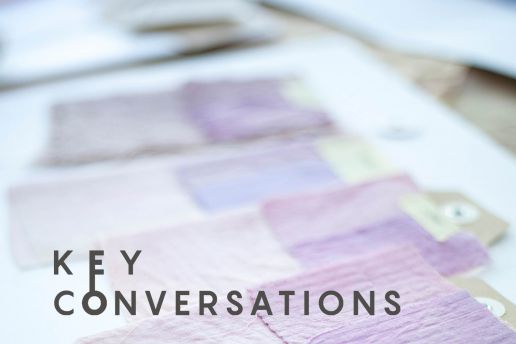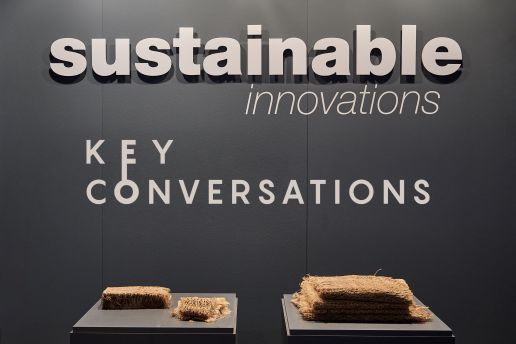fibers made of waste
Key Conversations: Natural dyeing as a future fundamental
Colour researcher Julia Kaleta is dedicated to strengthening colour communication and exploration into natural dyeing as a sustainable alternative for the fashion industry. What began as a passion project, the Atlas of Sustainable Colours now addresses a real need in the industry by providing comprehensive colour referencing and inspiration for natural dyeing.
Julia Kaleta sat down with Simon Angel as part of our Key Conversations video series to talks us through the evolutions or the work, the challenges of integration with design libraries as well as the realities embraced by sustainable fashion brands and designers making the move towards sustainable alternatives in dyeing.
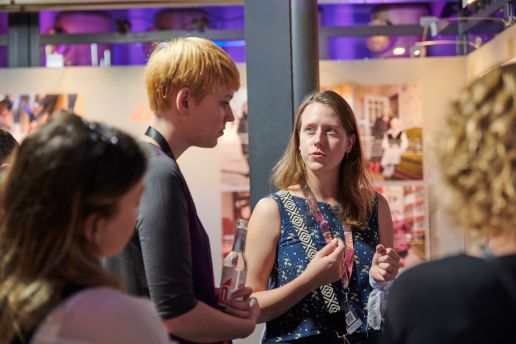
Can you tell us how you work and the atlas itself has changed since you exhibited at Keyhouse in 2019?
During the exhibition I made a lot of new connections and shared a lot of inspiring conversations which made me ask myself more questions about sustainable colouring. Since then, the project changed a bit, but its main goal to be a catalyst and facilitate the debate on sustainable colouring in the textile industry has stayed the same. I am currently working on a digital platform for the Atlas of Sustainable Colours, nevertheless, it is a side project which I am developing in my free time so this is still in the development phase. I keep in touch with researchers and designers in the field to stay up-to-date with new possibilities and challenges of colour innovation. Recently, I applied for a grant to further develop my research but unfortunately didn’t secure the necessary funding which would speed up production of the Atlas of Sustainable Colours, to make it available for those who would benefit from having it in their design libraries.
What is the next step to this project?
The project itself sparks a lot of curiosity as people are very interested in what the project has to offer, usually following up with messages about how to get their hands on a copy. This shows that small brands and independent designers are in need for a guide into alternative colouring. My focus now is on production and realising my dream to make this book available to buy. In the meantime, I offer services as a sustainable colour consultant to help brands navigate the challenges of natural dyeing. While it is not the first catalogue of natural colours, the Atlas of Sustainable Colours is indeed the first compendium and comprehensive guide to colours made with alternative dyeing methods.
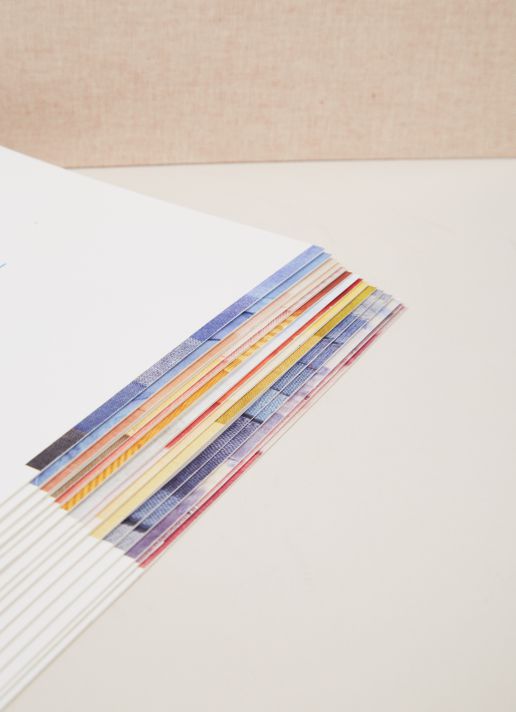
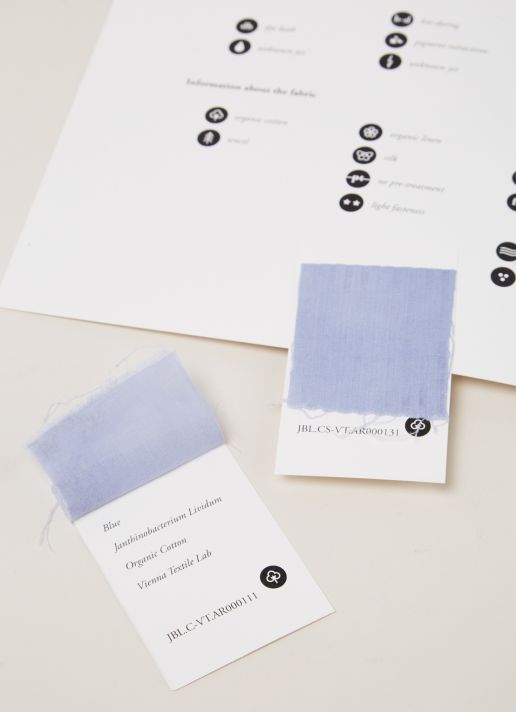
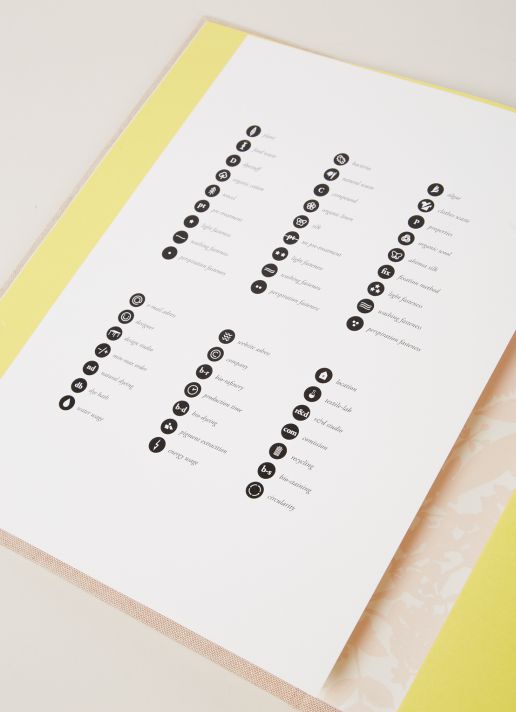
Tell us what you’re currently working on, is there something in particular which is new and challenging you have to tackle?
Last year was particularly challenging for me. Especially while undergoing work to realise the digital platform, it is much bigger project which is still looking for funding to take the project forward. I was invited as a guest lecture to speak with students on the topic ‘Ecological debate in fashion through the prism of colour’. It was an extremely fulfilling experience that has led to my decision to study for a PhD. From here I would say that the most challenging thing will be to remind myself to keep developing the project also way that is sustainable for me.
What’s your viewpoint on colour in fashion?
I look at colour as a tool to create an aesthetic experience. Therefore, I encourage every designer who is in the unique position of power to create new objects, to ask themselves not only about the origin of textiles but also to wonder where the colour comes from and how it was produced. It’s not always easy to find that information, but in the process, you will think more in depth about the complexity of the fashion industry and the importance of questioning the origin of the resources we use. These are the kinds of questions we must ask if we want to make more sustainable products and secure a sustaining life on this planet.
Do you have any advice to brands making the shift from synthetic to natural dyeing processes?
The best way is to open up a conversation with your textile supplier. In the end the goal is to recreate the fashion system, and if you are working with a textile supplier ask if they have in their offer colours made with natural ingredients. If they don’t have it, they will at least notice a demand for change. If your brand’s DNA focuses on optimizing waste and being more circular, it is great to look for fabrics dyed with waste from the food industry or embrace the process of making it on your own. It is important for a designer who wants to work with alternative colours needs to embrace the unpredictability of the outcome of the dyeing process. From a design side of things, it is important to consider the fact that natural colours may gradually fade away. Lastly, locality is a very important sustainable value. What does it mean in the context of dyeing? Look for local dyers in your country and start amazing collaborations with local studios who will dye your collection with indigo, madder or turmeric for example.
Who is your dream company to collaborate with and why?
Oh I would love the Atlas of Sustainable Colours to be in every design school both as a reference and inspiration. Besides that it would be amazing to collaborate with Natsay Audrey Chieza, one of the pioneers in bio-dyeing and a very inspiring woman, who works in a field of biotechnology and design.
Our thanks to Julia Kaleta for her insights and joining us in conversation as part of the Key Conversation series with Sustainable Innovations curator, Simon Angel. If you’re interested in a collaboration with Julia, she’d love to hear from you! Find out more here: https://juliakaleta.com/contact
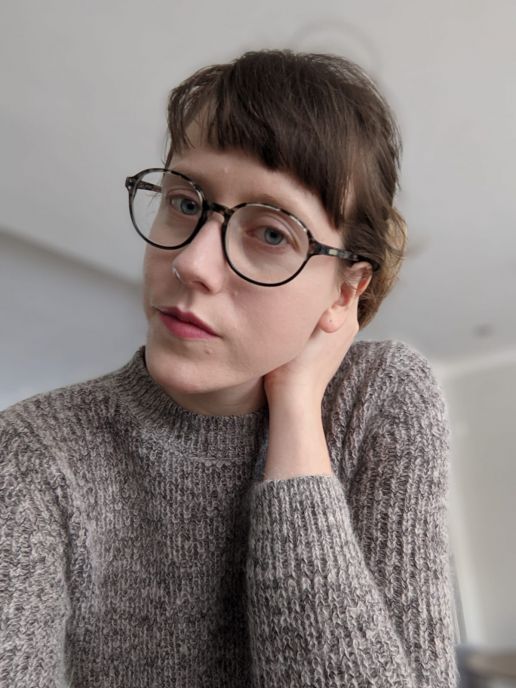
Let’s keep the conversation going … did this project spark an idea or do you have any questions? We’d love to hear from you, send us an email to info@munichfabricstart.com
Sustainable Innovations presents Key Conversations
As the curator of the Sustainable Innovations Forum, Simon Angel keeps an ear close to the ground when it comes to the latest material developments and emerging design concepts. It’s no surprise then that from years of experience he is an expert in cultivating relationships and bridging conversations to strengthen connection and progress in the world of Sustainable Innovations. Don’t miss to read about last seasons’ developments presented physically in the Sustainable Innovations forum at MUNICH FABRIC START.
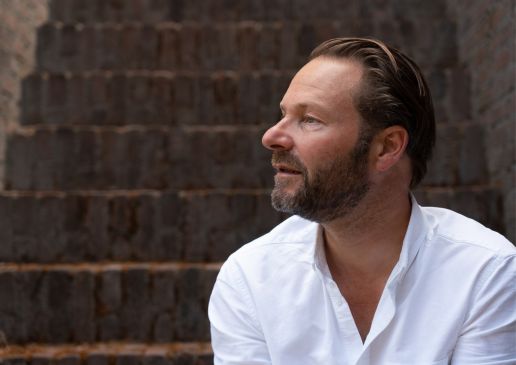
“I’ve always thought of the Sustainable Innovations Forum as a podium, the forum is a place where we can have conversations, discuss ideas and share information. It has become a place for connection and collaboration. In times when designers and sustainable innovators are isolated and we cannot meet as before, it is important that we do not lose this connection. “
Simon Angel, Curator of the Sustainable Innovations Forum
Together with Simon, we have initiated a new video series we are calling ‘Key Conversations’ as an extended platform of the Sustainable Innovations forum. Hoping to provide designers and innovators with the opportunity to prompt and exchange ideas.
Even though designers may feel a sense of disconnection as they work alone in their studios, there is still so much exciting progress being made. By inviting designers to join him in conversation, Simon hopes to resolve this paradox and once again create another platform for connection and facilitate an open exchange of unique insights and experiences.
What is Key Conversations?
Simon will invite designers and innovators from his network as well as past and present members of sustainable innovations community to join him in video conversation. We can look forward to the same lively and friendly interaction which is key to getting to the heart of the projects which Simon will bring on board here. Our goal is to offer tangible insights which can led to real life applications and collaborations by sharing these conversations with our online community.
What is the goal of these conversations?
Collaboration through conversation is key. By revealing insights and sharing an open dialogue there is an opportunity to connect and broaden the scope of what we believe is possible for designers and brands. We hope readers of this blog and viewers who watch our videos can connect with the projects on a deeper level and jump on the profiles and websites of the designers to learn more. There is always a chance to take part in the conversation by sending an email to Simon Angel or the designers featured.
What innovations will we hear about?
We are keen to provide our community with an update from our previous participates of the Sustainable Innovations Forum. Especially, we will hear about the progress and growth of their concepts since joining us at the Keyhouse. As well as this, Simon will speak with innovators in the fields of organic material development, natural dyeing solutions, and the use of natural resources in technology, among many more unique and diverse topics.
What now?
New videos and interviews will be shared on our social media channels and Munique Blog. We will feature upcoming articles here in an easy collection coming soon!
Let’s keep the conversation going … did this project spark an idea or do you have any questions? We’d love to hear from you, send us an email to info@munichfabricstart.com


